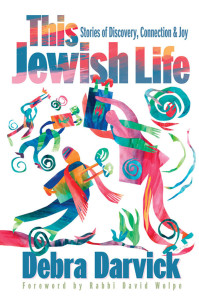Dealing with the loss of a loved one
The laws and customs surrounding a Jewish death, the process of mourning and the Jewish burial ceremony are steeped in respect for the deceased and compassion for their bereaved. The concept of kevod hameit, honor and respect of the dead, ensures that the body of the deceased is treated with care and concern at all times. The tradition of nichum avelim, comforting the mourner, creates a structure that is psychologically healthy and enables the mourner to pass through many stages of grief.
Jewish Burial Rituals
As a sign of respect, Jewish funeral traditions require that from the moment of death until burial, the body is watched over by a shomer, or guardian, who says t’hillim (psalms) in a continuing recitation of prayer. The body is ritually washed and readied for burial by specially trained members of the chevra kedisha, the Jewish burial society. Men prepare the bodies of males for burial, and women perform the same rituals for deceased females.
The deceased are dressed in simple white garments called tachrichim and are buried in a pine box. Jewish burial customs dictate simplicity; neither flowers nor music are part of a Jewish funeral. Just prior to the funeral’s start, the immediate relatives of the deceased tear their garments (such as a collar or a lapel). Some mourners pin a torn black ribbon to their clothes instead. Both actions symbolize the mourner’s loss. Jewish law requires burial within 24 hours of death. Circumstances (transporting the deceased, traveling long distances to attend the funeral) may require a delay, but burial should still occur as soon as possible.
Jewish funerals are not held on the Sabbath or any other holiday. Funeral services are held at a synagogue, funeral home or at the gravesite. Viewing of the deceased’s body, whether public or private, is not in keeping with Jewish tradition.
Following the funeral service the casket is lowered into the earth and mourners take turns filling the grave using the wrong side of the shovel (to symbolize the upheaval of grief and one’s world being out of order). The Kaddish prayer is recited after burial is complete and as mourners leave the cemetery, or before entering the house of mourning, it is tradition to wash one’s hands, symbolically leaving behind not grief’s hold, but death’s.
Mourning and Grief
There are three set time periods of mourning. The first, called shivah, seven, begins immediately following the burial and lasts for seven days. Shivah is observed for a father, mother, husband, wife, son, daughter, brother or sister. Sh’loshim, 30, is the next period and begins at the conclusion of shivah through the 30th day after burial. A third period of mourning, avelut, is observed for a parent and concludes 12 months from the day of death.
During these three periods, the mourner recites Kaddish, which is not a prayer for the dead but one declaring God’s greatness. The Kaddish, recited in Aramaic, the ancient language of the common people, is a petition for redemption and salvation.

Art by Emma Darvick
Personal Stories of Jewish Life and Culture
 These and more Jewish traditions are brought to life in the personal stories and accounts of Jewish experiences in my book, This Jewish Life. The book is made up of 54 stories of birth, notable life events, holidays and death. This Jewish Life is one calendar year of Jewish life as told by a diversity of voices.
These and more Jewish traditions are brought to life in the personal stories and accounts of Jewish experiences in my book, This Jewish Life. The book is made up of 54 stories of birth, notable life events, holidays and death. This Jewish Life is one calendar year of Jewish life as told by a diversity of voices.
Since my book is structured to reflect the timelines of Jewish life, the final story involves a woman who belongs to her community’s chevra kedisha (Jewish burial society). I was fortunate to be with my grandmother in her final days. Having spoken to Kathy Engber about her work with the chevra kedisha, I was able to make the necessary calls and assure that my grandmother’s body was cared for according to Jewish tradition.
If you are interested in more information on Jewish life, continue to browse these pages or check out my book, This Jewish Life.
- Return to category page: Resources: About Jewish Life
- Related Story: She Is Pure – A beautiful story that comforts as much as it informs by a woman involved in the sacred process of Jewish burial. This story taught me a great deal about Jewish burial traditions that I was not aware of before; during my Grandmother’s final days I was able to make the necessary calls and assure that her body was cared for according to Jewish tradition.
- Related Story: Should War Beset Me, Still Would I Be Confident – The story of a young girl who fulfilled the Jewish tradition of not leaving the dead alone during the 9/11 terrorist attacks.
- Check out my book: This Jewish Life, Stories of Discovery, Connection & Joy
